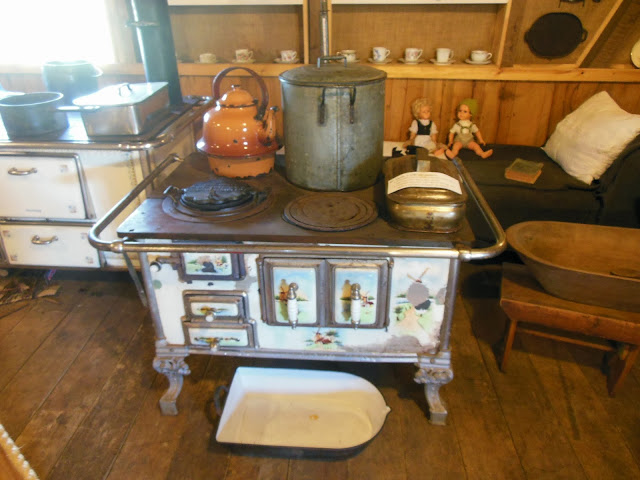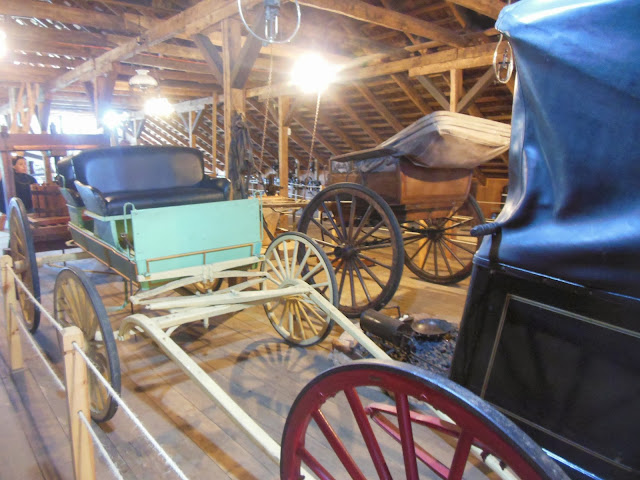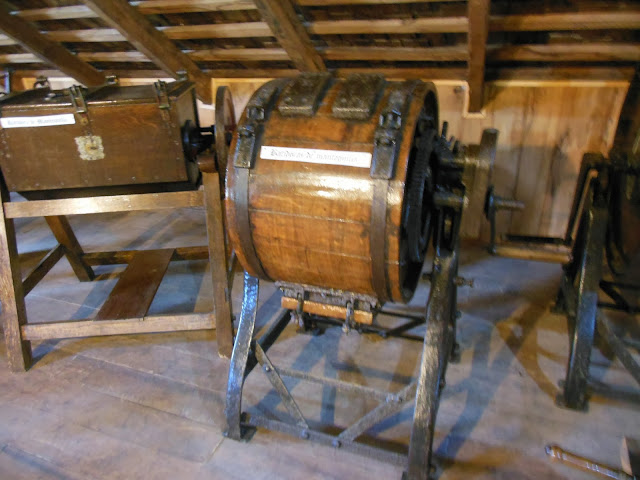We have been very intrigued by the German influence in this area. We visited a Museo in Nueva Braunau (Braunau being a german town). It was started by a german immigrant who went to all his neighbors collecting family artifacts. In 1845, Chile passed an immigration law to attract immigrants to settle the southern parts of Chile. Between 1850 and 1870, 6000+ families came from Germany. They settled in Valdivia and then Puerto Montt and hacked their way through the dense Valdivian rain forest to carve out farms. Can you imagine the journey in ships from Germany, across the Atlantic, all the way down through the Strait of Magellan and back up the coast? A very intimidating undertaking.
There are many Chileans of german descent still here and it is reflected in the architecture, food, and language of this area. There are lots of kuchen bakeries(yum!), german schools, and german style homes. Karl, our tour guide, grew up speaking german but also spoke spanish and english(learned from watching American movies!) very well.
The germans here are fairer and taller than the average chilean of spanish descent so we don't stick out quite as much (as long as we don't open our mouths!)

|
| The Museo is in an old barn. |

|
| An old steam engine for powering farm equipment in the field |

|
| An old gramophone and it still works! |

|
An old piano from 1809 - one year older than the Republic of Chile
It was brought over by boat |

|
| An old wood cookstove - they still use these here - they sell them in the local supermarket |

|
Music was important to the Germans - old accordion
I'm sure this is not as good as the old Loduca Accordions made by Angie's family in Milwaukee! |

|
| A pump organ |

|
| Jim's hot tub and steam box |

|
| Treadle Sewing machines just like my great grandmother's which my friend Sherry just restored for me |

|
Guess what this is?
I'll tell you at the bottom |

|
| A cider press for making hard cider also known as chicha down here |

|
| Beautiful horse drawn carts |

|
guess what this is?
see at bottom |

|
Here is our tour guide Karl opening up the latest in washing machines
all hand cranked |

|
| After the washing , you put it through the wringer |

|
Then you put it in the wood fired drier
yeah! smoked laundry |

|
This is the coolest music box!
underneath is the cabinet for storing the large metal disks
and inside goes the metal disks |

|
| This is the inside which is a series of bells and metal keys for those really high notes |

|
Here is the disk that goes inside
they still work but they just play a recording of their music so they don't get worn out |
And now for the answers - the first picture of the screen box was an old fashioned fridge!
You hang or set your foods inside the screen box and lower it into your well to keep it cool
and the round drum in the second picture was a giant butter churn
